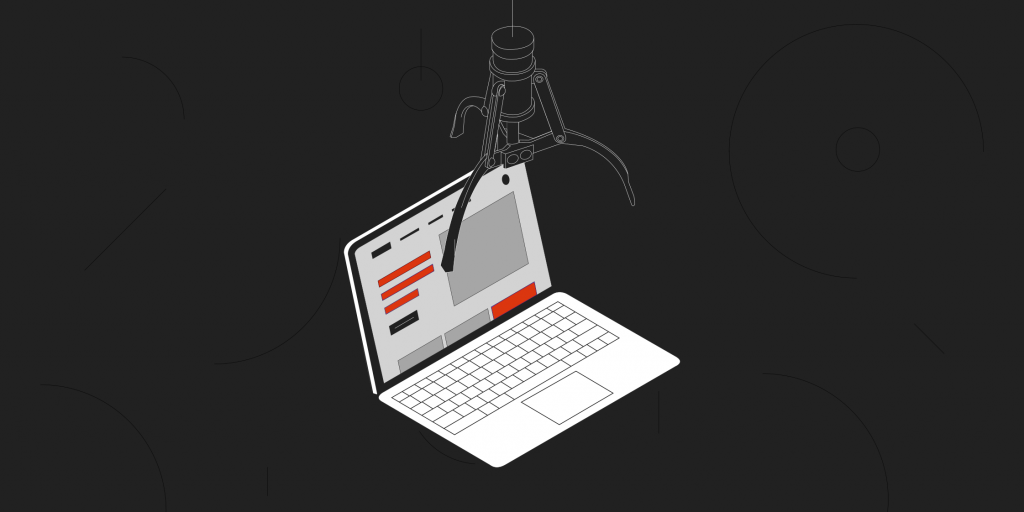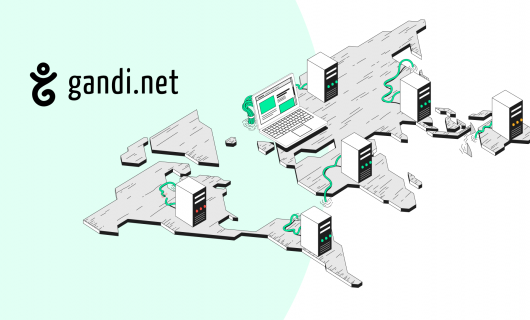What is phishing?
Phishing is a type of cyber attack in which the malevolent party pretends to be a legitimate company or individual, in order to get people to send them sensitive information such as passwords or credit card information.
Cyber attacks may be done by various means, such as email, social networks, or even fake websites. Phishing attacks may work very well because the criminals often use clever tactics in order to disguise their messages and websites so that they seem legitimate (official-looking logo, colors, etc.). They constitute a serious menace for both individuals and businesses because they can lead to identity theft, financial loss, or even harm the reputation of a company. It is therefore important to be aware of the risk of phishing, and to take measures to protect yourself against it.
How does phishing work?
To better help protect against these cyber attacks, let’s see how the criminals work:
Fraudulent emails are sent that appear legitimate, like from a bank or an online commerce website. These emails may contain links or attachments that, once clicked on or downloaded, install spyware on the computer of the victim, or redirect them to a website that pretends to be the real one. Once on the site, the victim is asked to enter sensitive information such as password or other bank account details.
The objective of phishing is to deceive you into revealing personal data, that is then used for identify theft or financial fraud.
What are the risks of phishing?
Phishing attacks constitute a serious menace for both individuals and businesses. Here are some of the risks of phishing:
Identity theft:
When a criminal is able to obtain sensitive information such as the login credentials or bank account details of a victim, they may use this information to steal the identity of the victim and access their accounts.
Financial loss:
During a phishing attack, if an individual provides their banking information, the criminal may be able to make unauthorized purchases or withdraw money from the victim’s bank account.
Harming the reputation of a company:
Employees of a company may be tricked into communicating sensitive information, leading to a violation of data privacy and therefore harm the reputation of the company.
Access to sensitive systems:
In certain cases, criminals may use phishing attacks to gain access to sensitive business or government systems.
Phishing attacks can be very efficient, because they often use sneaky tactics so that their messages and websites look authentic.
How can I protect myself from phishing?
Here are some tricks that you can use to protect yourself against phishing attacks:
Be suspicious of unsolicited messages and emails
If you receive a message from an unknown sender, don’t click on any link, reply, or download any attached file. You could also use an email protection system such as Altospam.
Be attentive of signs indicating that an email may be fake
Criminals often use fake email addresses or use names and logos of companies in order to make their messages appear legitimate. Typos or poor-quality logos are typical clues that the mail might be a fake.
Pass the mouse cursor over the link before clicking on it. You should then be able to see the internet address of the link and more clearly see if the landing page is legitimate or not.
Verify the security of the website
If you are asked to enter private information on a website, first check that it is secure. Look at the padlock icon in the address bar, and a URL that starts with “https://”. This padlock represents the SSL certificate of the website. This is a digital certificate that assures the authenticity of the website.
Use strong and unique passwords
The use of strong passwords that are difficult to guess may contribute to protecting your accounts. Avoid using the same password for several accounts, and use a password manager to help you to keep track of your passwords.
Activate two-factor authentication
Two factor authentication (2FA) is an additional level of security that forces you to enter a security code that is sent to your telephone or email address in addition to your password when you log in. It is therefore much more difficult for criminals to gain access to your accounts if you use 2FA.
Keep your programs up to date
Check that the latest updates and security patches have been installed on your devices and applications. This may help protect you against new and known vulnerabilities.
By following this advice, you may better protect yourself from phishing attacks and preserve the security of your personal and banking information.
What must I do if I think that I’m a victim of a phishing attack?
If you think that you have been a victim of a phishing attack, it is important to take the following steps if possible:
Change your passwords
If you think that your login information has been compromised, immediately change your passwords. Be sure to choose strong and unique passwords for each of your accounts.
Launch an antivirus scan
If you clicked on a link or downloaded an attached file as part of a phishing attack, your device might have been infected by malware. Launch an antivirus scan to try and detect and delete any malevolent software that may have been installed.
Contact your bank
If you provided bank account information during a phishing attack, contact your bank to alert them of this incident and protect your accounts.
Report the incident
If you think that you have been the victim of a phishing attack, report the incident to the authorities. By doing this you can help prevent others from falling victim to the attack and may even help the authorities find who is behind the attack.
Conclusion:
Phishing is a form of online fraud that has the goal of stealing personal banking information. There are several ways to protect yourself against phishing, notably by being vigilant when you receive suspicious emails or messages, verifying the URL of websites, and installing up-to-date anti-virus and anti-malware programs.
If you think that you have been the victim of phishing, you should immediately report the incident to your internet service provider or the appropriate regulatory authority. For example, if the attack came via email, and you want to report it, you can do so at https://www.signal-spam.fr/en/




